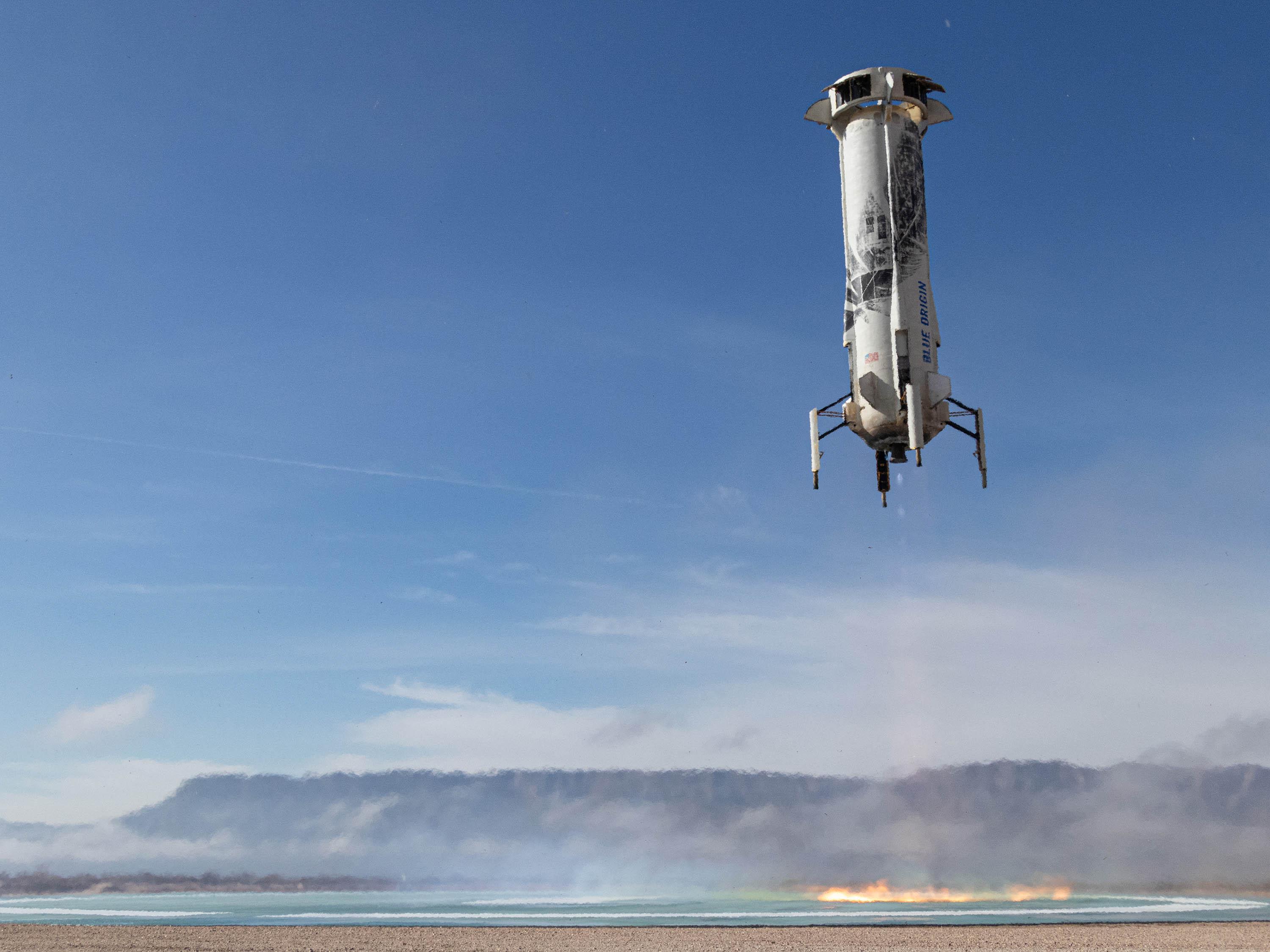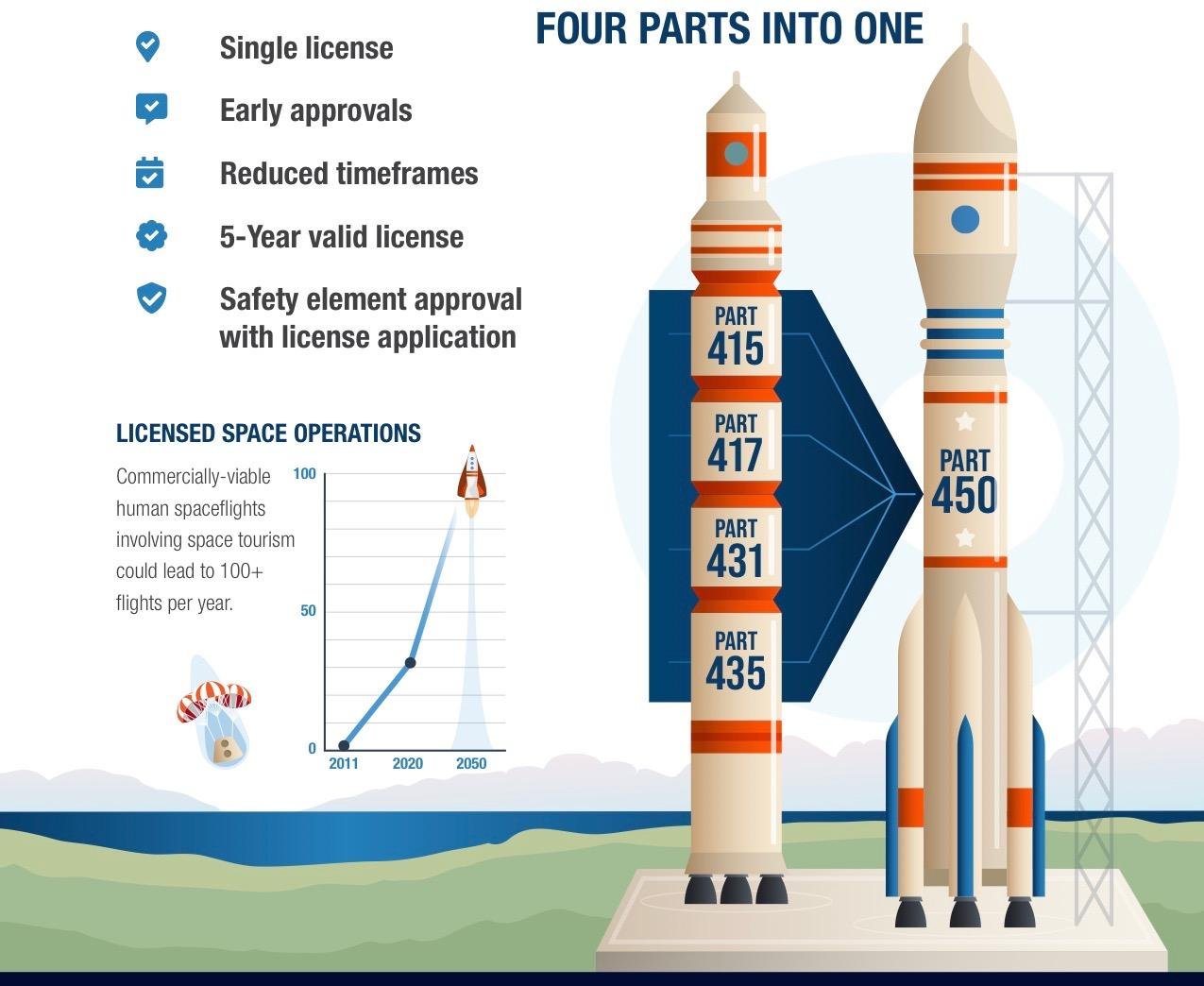
The FAA on Oct. 15 announced the release of pared-down launch and reentry licensing regulation that is expected to fuel the growth of the nation’s commercial space industry.
Heralded as an “historic milestone,” the Streamlined Launch and Reentry Licensing Requirements (SLR2) final rule consolidates and revises four regulatory sections into a new Part 450 rule that allows commercial space operators to acquire a single license to conduct multiple launches from multiple sites. The rule is performance-based; it requires that launch and reentry vehicles comply with performance standards instead of specific, FAA-prescribed conditions.

“The goal is to simplify the licensing process and allow novel operations and reduced costs, and position both the industry and the FAA for the rapid increase in the number of launches that are coming, all without compromising safety,” said Wayne Monteith, FAA associate administrator for commercial space transportation.
“The new rule is streamlined; it’s flexible and agile, it facilitates innovation,” added Monteith, who spoke during a virtual press event to announce the rule’s publication. “It’s transparent and reduces duplicative government requirements [and] only regulates to the extent necessary.”
This year, the FAA expects to license around 35 space vehicle launches and reentries, increasing to 56 such operations in 2021. Already this fiscal year, which began on Oct. 1, the agency’s Office of Commercial Space Transportation has supported three commercial missions. It anticipates a launch tempo of 100 flights-per-year in the future.
The SLR2 rule responds to a requirement set out in Space Policy Directive-2, issued by the White House on May 24, 2018. The presidential memorandum called on Transportation Secretary Elaine Chao, working with the National Space Council, to review and then “rescind or revise” existing regulations governing launch and reentry licensing to require a single license for all types of operations, with performance-based instead of “prescriptive” requirements.
The FAA published a notice of proposed rulemaking for the regulation on April 15, 2019. The final rule enters force 90 days after its Oct. 15 publication in the Federal Register. Existing launch licenses can still be used for up to five years after the rule’s effective date.
A Part 450 workshop has been scheduled for Nov. 4-6 to explain the final regulation to industry, Monteith said.
The FAA also will seek public comment for 30 days on promulgating three advisory circulars (AC)—or regulatory guidance documents to industry—covering the topics of high consequence protection, high-fidelity flight safety analysis and computing systems and software. The first topic refers to the use of consequence criteria to determine if a launch operator needs a Flight Safety System and a means to terminate an errant rocket that presents a public hazard.
The agency expects to publish another 24 ACs “within one year or as needed.”
Reacting to the release of the regulation, the Washington-based Commercial Space Federation (CSF) described the rule as a welcome next step in the “urgently needed” reform of U.S. commercial space transportation regulations.
“CSF members uniformly advocated for significant changes to the 2019 proposal, and we look forward to studying this voluminous final rule and accompanying advisory circulars,” said CSF President Eric Stallmer. “We are hopeful that this revised regulation takes a significant step in fostering a safe, efficient, innovative, and internationally competitive U.S. commercial space industry.”
But the federation said it also supports a recommendation of the FAA’s Commercial Space Transportation Advisory Committee that calls for the establishment of an advisory rulemaking committee to develop further refinements to the Part 450 regulation.
The Coalition for Deep Space Exploration, an organization of 60 space industry businesses and universities, complimented the FAA “for the productive dialog it has undertaken with the launch industry and other business stakeholders in crafting SLR2. We also welcome future consultation on the rule and on advisory circulars published today, as well as those still in development,” said coalition president and CEO Mary Lynne Dittmar.






Comments